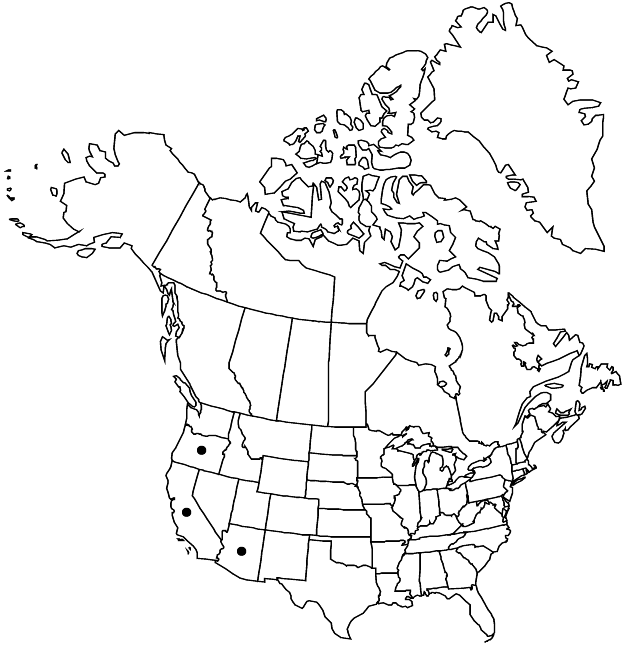Minuartia douglasii
Bot. Jahrb. Syst. 57(Beibl. 126): 27. 1921.
Plants annual. Taproots filiform to somewhat thickened. Stems erect to widely spreading, green or purple, 4–30 cm, stipitate-glandular distally, internodes of all stems 1–5 times as long as leaves. Leaves sometimes overlapping proximally, ± evenly spaced, connate proximally, with loose, scarious sheath 0.3–0.7 mm; blade straight to variously curved or coiled, green or purple, concave, 1–3 veined, linear, 5–40 × 0.2–0.4 mm, flexuous, margins not thickened, often scarious, sometimes ciliate or stipitate-glandular, apex green to purple, acute, navicular, dull, glabrous to stipitate-glandular; axillary leaves present proximally. Inflorescences 7–15+-flowered, open cymes; bracts subulate, scarious. Pedicels 0.2–4 cm, stipitate-glandular. Flowers: hypanthium disc-shaped; sepals 1 (–3) -veined, midvein often more prominent than lateral-veins, ± ovate (herbaceous portion lanceolate to oblong-lanceolate to narrowly ovate), 2.5–3.7 mm, not enlarging in fruit, apex often purple, obtuse to acute, not hooded, stipitate-glandular at least proximally; petals ovate, (1–) 1.7–2.1 times as long as sepals, apex broadly rounded, entire or irregularly dentate. Capsules on stipe 0.3–0.5 mm, broadly ovoid, 4 mm, longer than sepals. Seeds reddish-brown, winged, orbiculate with radicle not prolonged, compressed, 1.3–2 mm, tuberculate; tubercles low, elongate.
Phenology: Flowering spring–early summer.
Habitat: Sandy and rocky slopes in chaparral, oak or pine woodlands
Elevation: 100-1800 m
Distribution

Ariz., Calif., Oreg.
Discussion
The winglike margins on the seeds of Minuartia douglasii are unique among North American members of the genus; M. howellii and M. tenella, the other members of sect. Greniera (Gay) Mattfeld, do not share this feature.
Plants with petal apices usually emarginate rather than entire and obtuse and often shorter than in typical plants have been recognized by some as var. emarginata.
Selected References
None.